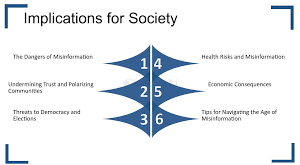The Advent and Consequences of Mobile Phones
mobile phones have become an integral part of contemporary lives, changing communication, business, and even our private lives. For example, from the thick, heavy devices in the later 20th century to today’s super slim smart phones, mobile phones have had a new face altogether.
This paper explores the history, function, social influence, and future trends of mobile phones, and the changes they have introduced into the modern world.
A brief history of cell phones
Mobile oral communication takes its roots as far back as the early twentieth century, although it wasnt until the 1980s that the first commercial mobile cellphone arrived. In 1973, an engineer at Motorola designed the first public mobile smartphone call using a device weighing nearly 2 and a half of kilos.
The early models mainly targeted the business sectors and were prohibitively highly priced, thus limiting their reach to a very exclusive clique of the population.
Through the 1990s, it was the advancing technologies that brought on smaller and more attainable models. When the Nokia 1011 launched in 1992, it became the biggest jumping off point because it was, after all, one of the first GSM phones hit upon the market.
The innovation of a digital mobile network and the introduction of features such as SMS text messaging fundamentally altered how people communicated with their device and each other.
The early 2000s saw the arrival of smartphones with products like the BlackBerry and later the Apple iPhone in 2007. That was a game-changer then because such smartphones incorporated net connectivity,
cameras, and many more programs to provide users with a lot more than just making calls. The deployment of these smartphones has since revolutionized communication and access to data.
capability and functions
Current mobile phones are complex machines which integrate many features into one small piece. Here are some of the main features that have contributed to their appreciation:
1. Conversation
At the base level, mobile phones are communication devices. They allow customers to place voice calls, exchange text messages, and participate in video calls via platforms such as FaceTime and Zoom. Instant messaging apps including WhatsApp and Facebook Messenger further transformed the communication process, allowing customers to connect with each other instantly across the globe.
2. Internet access
Smartphones are also now portable internet gateways. With cellular statistics plans and wi-fi connectivity, customers can browse the internet, get right of entry to social media, and circulation movies from in reality somewhere.
This regular get right of entry to to statistics has changed how we eat news, interact with content material, and connect with others.
3. packages
The evolution of app stores has dramatically diversified the functionality of mobile phones. Be it any productivity app or games, social media sites or fitness monitors, there is an app for almost every requirement.
This has made smartphones become more than just a tool for communication; instead, agents in the management of life itself.
4. Images and Videography
One of the most important camera features on the telephones has greatly improved through time. Most of today’s smartphones have multiple lenses, higher optimizing abilities, and features like portrait mode and coffee-mild performance.
This has democratised images such that any person who can unlock a telephone can now seize excellent images and motion pictures, which explains the emergence of social media influencers and content material developers.
5. Navigation
In it navigation, it is the most significant way that GPS generation has touched our lives. It’s because it’s already embedded in the phone, thus continuously revolutionizing how we navigate. This newfound navigation will alert users on real-time instructions from applications such as Google Maps and Waze, the number of people who visit sites, or even alternative routes.
A person is quite unlikely to get lost because it has significantly improved our ability to explore new places.
Societal impact
Cellular phones have altered society significantly. though they have led to a better connecting and easier life, new problems have been unleashed.
1. changes in conversation style
Cell phones have transformed the way we communicate. The immediacy of text message communications and social media interactions has created a requirement for digital verbal exchanges versus in-person conversations.
Even though this may inadvertently encourage easier connections, it could also become a reason for a decline in more meaningful, deeper interactions.
2. Mental health issues
With the relentless uptake of cellular phones comes debate on intellectual wellness. studies have indicated that extreme amounts of time spent gazing upon screens and social media use impact issues, such as tension, depression, and feelings of loneliness.
The drive to sustain an online presence can be overwhelming for some, leaving a terrible impact on shallow pursuit and general well-being.
3. Work-life balance
The greater threat will be the blurring of lines between work and personal life with always being connected. Such connectivity may be enhancing productivity but can also have the effect of burnout since the workers cannot disconnect themselves from the work communications.
This culture of urgency may thus be enforced through the anticipation of the promptest response, with effects on what used to be common activity pride.
4. Cultural Changes
Cellular phones have transformed cultural norms for spoken discourse and entertainment. With the rapid upsurge in social media applications, sharing and uploading of personal lives happens, with most users preferring to share experiences online.
This trend has adverse effects on privacy since people are faced with the dilemma of information leakages and trespass of over-divulgence borders.
Future of cellular phones
In search forward, the future of cell phones is looking for more innovation. Several trends are emerging that could shape the next generation of cell devices:
1. 5G era
A rollout of 5G network deploy would beautify connectivity speeds and reduce latency, making way for brand spanking new applications, including AR and VR. That will revolutionize gaming, training, or even far flung work and provide richer, more immersive reports.
2. Foldable gadgets
Development in foldable phones changes the look and the shape of it. Such devices ensure large screens at the cost of portability, attracting buyers looking for better multimedia research.
3. More emphasis on security and privacy
The more the facts of privacy issues are raised, the more investment in extra effective security features on the device by producers is witnessed. Biometric authentication, end-to-end encryption, and extra privacy settings are coming up as one of the most effective ways in securing client information.
4 .Sustainability
The increase in public attention on environmental issues may demand that technology follow sustainable practices. some time from now, mobile phones may also have recycled materials, energy-green additives, and modular designs that can be easily repaired and upgraded.
Conclusion
Cellular phones have changed the way we communicate, work, and live. Their fast growth from simple communication devices to great smartphones affected the society big time, bringing with it possibilities and challenges.
As generation continues to grow stronger, cellular phones will continue to be the keystone of contemporary life that will define how people interact with society around them. Perception of this development and its implications is important while we navigate the complexities of our increasingly connected lives.


